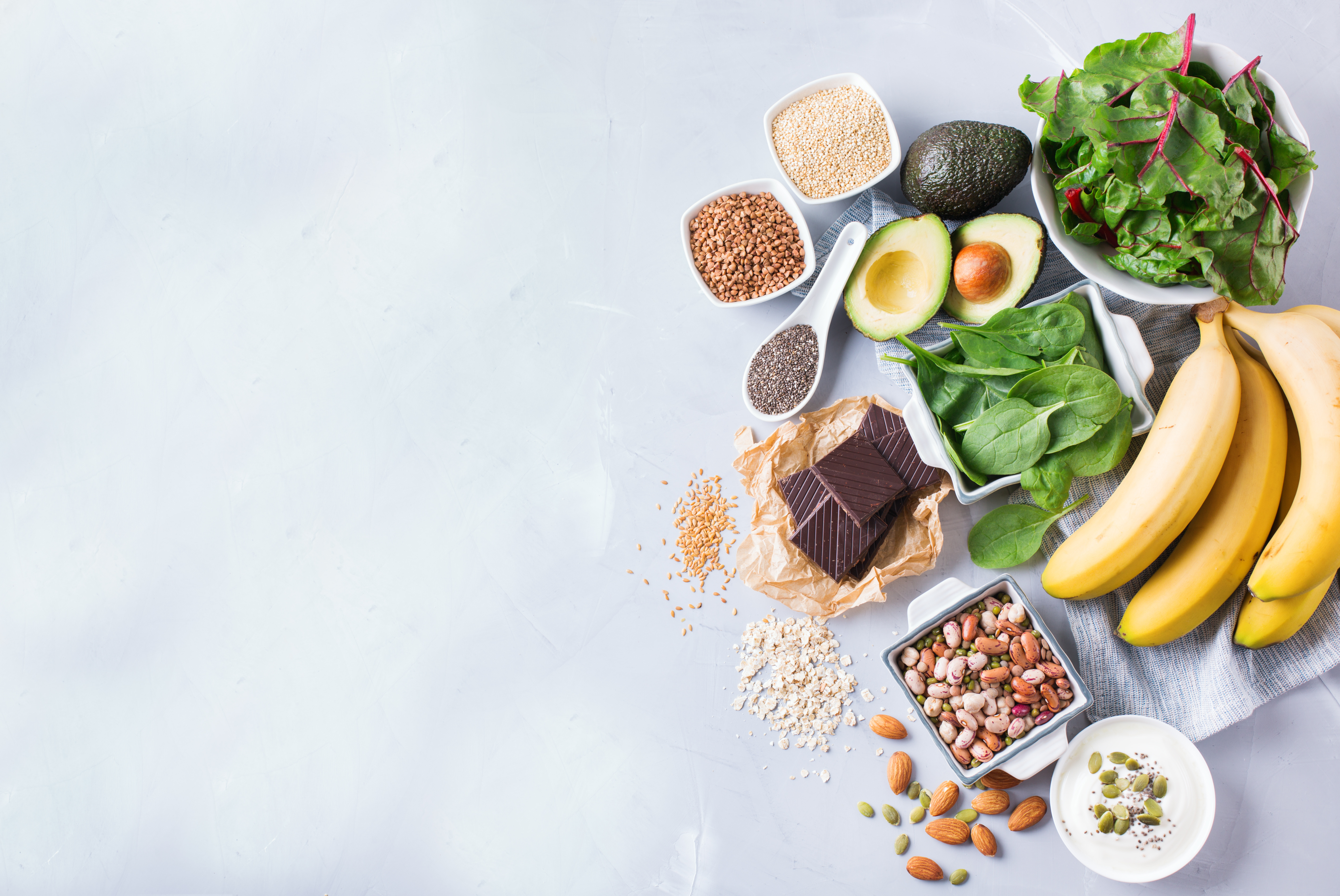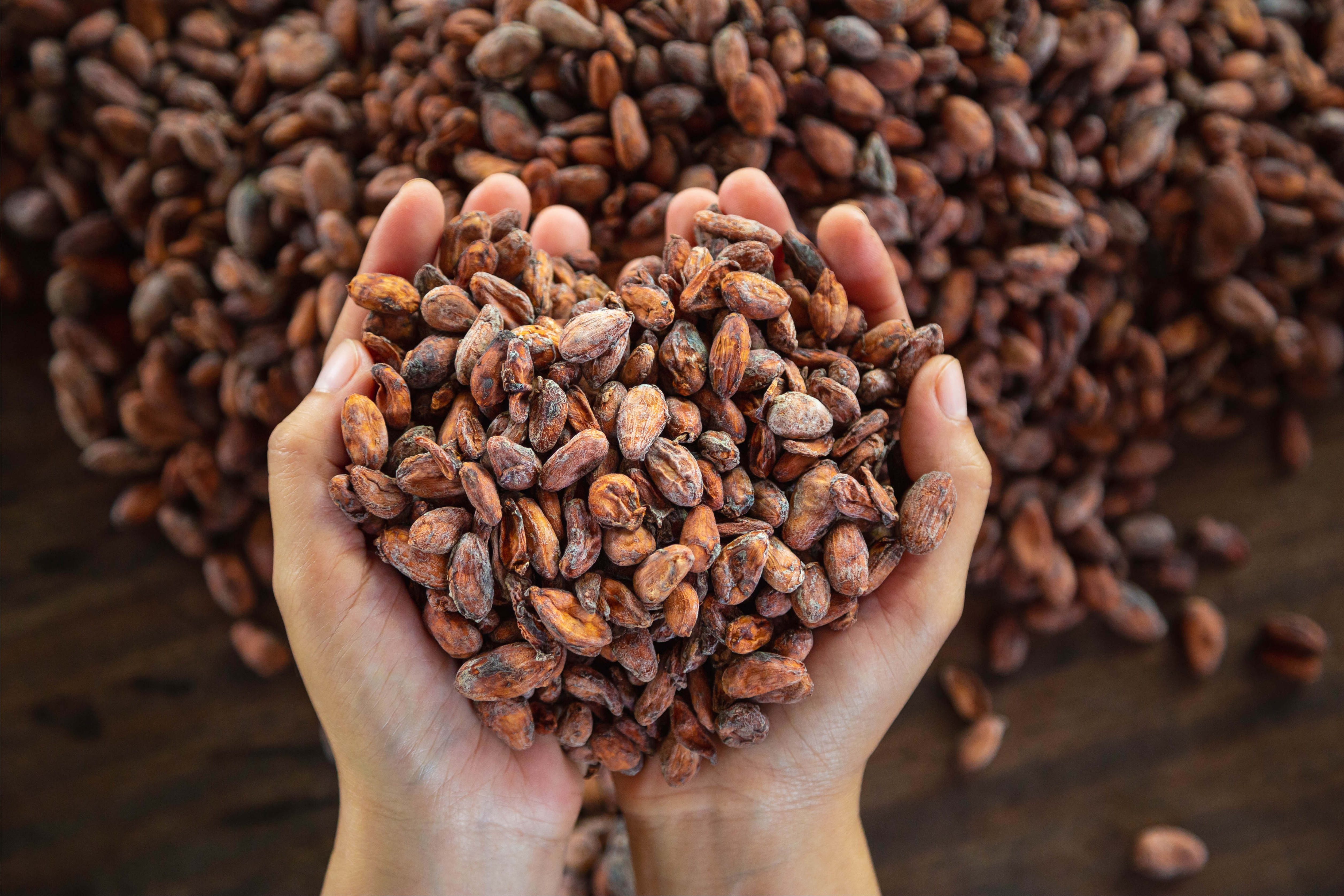written by Ema Kosova
July 29th, 2024
When someone asks me what I study, I normally say, “it’s about food systems and how to make them more sustainable”.
Then, I’m frequently met with a quizzical look:
“What does that mean?” Or: “So … about nutrition and stuff?”
Yes, in a sense, food systems are about nutrition – or eating. But in a less molecular and more ‘bigger picture’ way. They are about understanding where food comes from and how it gets to those who eat it, and about all the steps and interventions along the way.
We can think of a food system as the map of how we eat, from farm to fork. However, instead of assuming a linear process of food production, the concept of a food ‘system’ emphasises that the process is more complex.

Through the lense of chocolate
Beyond the basic steps of production, processing, distribution and consumption, many other elements shape the food we eat. Take the last bit of chocolate you ate: its path from cacao pod to the perfect square was not a given.
The system of chocolate production was shaped by a history of colonialism and trans-Atlantic trade that brought cacao from Central America to Europe, and later its plants to todays’ cacao plantations in West Africa.
Once considered a luxury in Europe, the popularity of chocolate today is conditioned by several socioeconomic factors: its relative affordability, as well as cultural norms (the Danish culinary tradition of pålægschokolade, putting chocolate on bread, comes to mind). Marketing, too, plays a part in the system by influencing customer choice.
Elsewhere, the production and distribution of chocolate on a large scale is made possible thanks to physical infrastructure (think roads and processing facilities) and is further supported by digital tools (e.g., market data).
Meanwhile, chocolate production is subject to a host of rules and regulations, dictating food safety, labelling, and working conditions. This social infrastructure also extends to cooperatives and NGOs such as the fairtrade organisations that aim to make chocolate trade sustainable and equitable.
Finally, environmental factors (e.g. climate, soil, pests and diseases, weather events) affect not only the geography of production but also productivity – in turn, impacting production costs and market prices.
I chose chocolate as a relatively ‘simple’ example – but even here the complexity of food systems becomes clear. The food we eat is not merely the result of a production process, but of an intertwining of culture, history, policy, environmental conditions and economic flows.
All of these elements must be considered when the sustainability of food is in question.

Food systems are plural!
When we talk about ‘the food system’, it’s often referring to food production on a global scale. However, diverse food systems exist at different scales, each with particular characteristics.
The Industrial Food System: characterised by high mechanisation, use of chemical fertilisers and pesticides, large-scale monoculture farming, extensive food processing and distribution networks.
Local Food Systems: local and seasonal production and consumption, smaller-scale farms, direct-to-consumer sales through farmers’ markets and community-supported agriculture.
Traditional Food Systems: Indigenous and community-based practices, diverse crop cultivation, reliance on local knowledge and biodiversity, minimal processing.
Circular Food Systems: an approach to food production and consumption that aims to minimise waste, make efficient use of resources, and create a ‘closed loop’ where outputs from one process become inputs for another.
Alternative Food Systems: also known as Alternative Food Networks (AFNs). These systems aim to create fairer, more transparent, and more sustainable food systems, often challenging the dominant industrial model. Such systems include fair trade, organic and regenerative farming, and food cooperatives.

Is Grønt Marked a food system?
Grønt Marked is dedicated to the development of a community-based food system that supports small-scale Danish produce and producers with a goal to make seasonal, local and regenerative farming accessible in Copenhagen.
It can be considered a local and alternative food system that aims to reconnect citizens with the history and origin of their produce. Further, it fosters a culture of care by emphasising the values of transparency in business, social responsibility, care for the environment, and animal welfare.
Grønt Marked is an example of a sustainable food system in the broader sense: one in which a fair economy, environmental health, and a sense of community and social wellbeing are secured.
By participating at the market as a producer, customer or volunteer, you’re helping to support the growth and resilience of a system that represents the future of the food industry as the Grønt Marked community sees it.
Ema is studying for an MA in Integrated Food Studies at the University of Copenhagen. In addition, she works in Communications & Marketing at Agrain, a company that upcycles spent grain into flour for the food industry. Every now and then you’ll also spot Ema serving coffee at ourVesterbro market.
GRØNT MARKED
Article: What is a food system?
written by Ema Kosova
July 29th, 2024
When someone asks me what I study, I normally say, “it’s about food systems and how to make them more sustainable”.
Then, I’m frequently met with a quizzical look:
“What does that mean?” Or: “So … about nutrition and stuff?”
Yes, in a sense, food systems are about nutrition – or eating. But in a less molecular and more ‘bigger picture’ way. They are about understanding where food comes from and how it gets to those who eat it, and about all the steps and interventions along the way.
We can think of a food system as the map of how we eat, from farm to fork. However, instead of assuming a linear process of food production, the concept of a food ‘system’ emphasises that the process is more complex.

Through the lens of chocolate
Beyond the basic steps of production, processing, distribution and consumption, many other elements shape the food we eat. Take the last bit of chocolate you ate: its path from cacao pod to the perfect square was not a given.
The system of chocolate production was shaped by a history of colonialism and trans-Atlantic trade that brought cacao from Central America to Europe, and later its plants to todays’ cacao plantations in West Africa.
Once considered a luxury in Europe, the popularity of chocolate today is conditioned by several socioeconomic factors: its relative affordability, as well as cultural norms (the Danish culinary tradition of pålægschokolade, putting chocolate on bread, comes to mind). Marketing, too, plays a part in the system by influencing customer choice.
Elsewhere, the production and distribution of chocolate on a large scale is made possible thanks to physical infrastructure (think roads and processing facilities) and is further supported by digital tools (e.g., market data).
Meanwhile, chocolate production is subject to a host of rules and regulations, dictating food safety, labelling, and working conditions. This social infrastructure also extends to cooperatives and NGOs such as the fairtrade organisations that aim to make chocolate trade sustainable and equitable.
Finally, environmental factors (e.g. climate, soil, pests and diseases, weather events) affect not only the geography of production but also productivity – in turn, impacting production costs and market prices.
I chose chocolate as a relatively ‘simple’ example – but even here the complexity of food systems becomes clear. The food we eat is not merely the result of a production process, but of an intertwining of culture, history, policy, environmental conditions and economic flows.
All of these elements must be considered when the sustainability of food is in question.

Food systems are plural!
When we talk about ‘the food system’, it’s often referring to food production on a global scale. However, diverse food systems exist at different scales, each with particular characteristics.
The Industrial Food System: characterised by high mechanisation, use of chemical fertilisers and pesticides, large-scale monoculture farming, extensive food processing and distribution networks.
Local Food Systems: local and seasonal production and consumption, smaller-scale farms, direct-to-consumer sales through farmers’ markets and community-supported agriculture.
Traditional Food Systems: Indigenous and community-based practices, diverse crop cultivation, reliance on local knowledge and biodiversity, minimal processing.
Circular Food Systems: an approach to food production and consumption that aims to minimise waste, make efficient use of resources, and create a ‘closed loop’ where outputs from one process become inputs for another.
Alternative Food Systems: also known as Alternative Food Networks (AFNs). These systems aim to create fairer, more transparent, and more sustainable food systems, often challenging the dominant industrial model. Such systems include fair trade, organic and regenerative farming, and food cooperatives.

Is Grønt Marked a food system?
Grønt Marked is dedicated to the development of a community-based food system that supports small-scale Danish produce and producers with a goal to make seasonal, local and regenerative farming accessible in Copenhagen.
It can be considered a local and alternative food system that aims to reconnect citizens with the history and origin of their produce. Further, it fosters a culture of care by emphasising the values of transparency in business, social responsibility, care for the environment, and animal welfare.
Grønt Marked is an example of a sustainable food system in the broader sense: one in which a fair economy, environmental health, and a sense of community and social wellbeing are secured.
By participating at the market as a producer, customer or volunteer, you’re helping to support the growth and resilience of a system that represents the future of the food industry as the Grønt Marked community sees it.
Ema is studying for an MA in Integrated Food Studies at the University of Copenhagen. In addition, she works in Communications & Marketing at Agrain, a company that upcycles spent grain into flour for the food industry. Every now and then you’ll also spot Ema serving coffee at ourVesterbro market.

